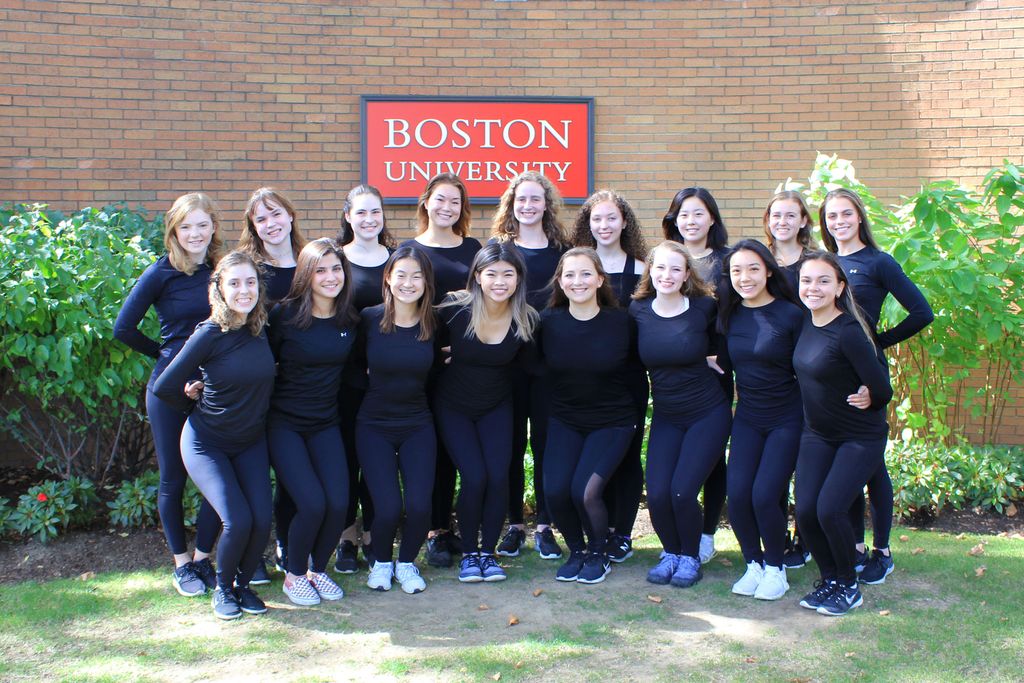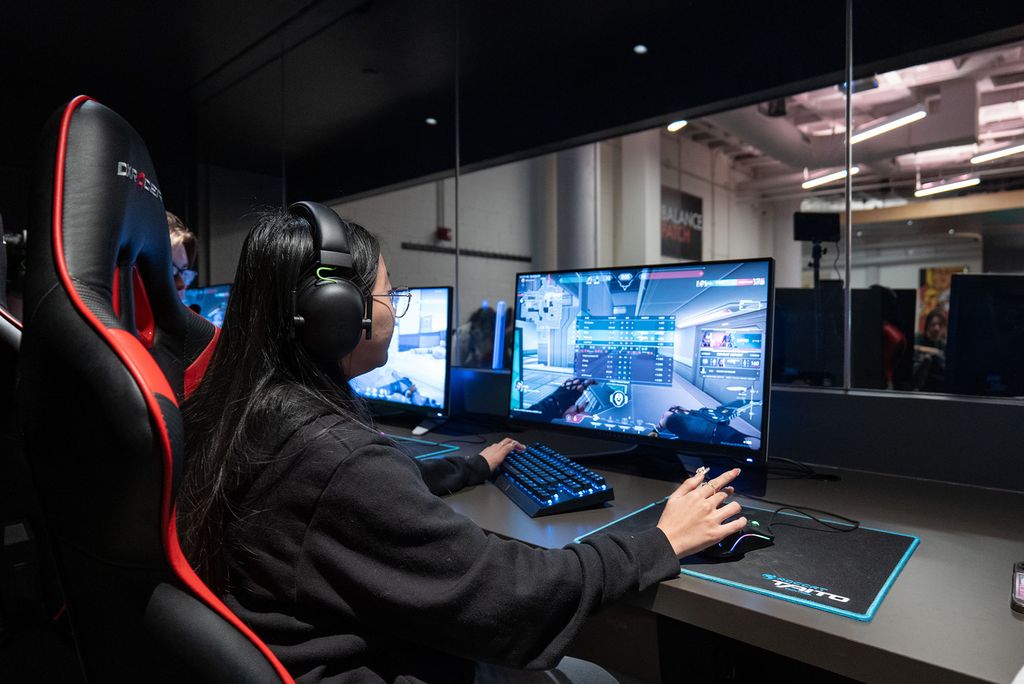For BU’s Synchronized Skating Club, It’s about Teamwork, Speed, and Intricate Formations
For BU’s Synchronized Skating Club, It’s about Teamwork, Speed, and Intricate Formations
For BU’s Synchronized Skating Club, It’s about Teamwork, Speed, and Intricate Formations
On a recent Thursday night, Walter Brown Arena is filled with the lush sound of Michael Bublé’s cover of Arthur Hamilton’s “Cry Me a River” playing over speakers as a group of 16 women glide across the ice, creating intricate formations as they execute lines, circles, and spins. The skaters move with precision, but also with elegant ease. Meet the award-winning BU Synchronized Skating Team. Now marking their 20th anniversary, the club team members practice for several hours each Wednesday and Thursday night, honing their competitive program for the season.
Synchronized skating is a team sport that combines elements of figure skating with synchronization. It demands teamwork, individual skill, and lots of coordination. To compete on the BU team, skaters must be able to pass the US Figure Skating Juvenile Moves in the Field Test. The team travels across the country, competing in collegiate competitions against other student-run synchronized skating teams governed by the US Figure Skating Collegiate Program committee.
Last season, the BU team earned a silver medal at the Cape Cod Classic and a bronze medal at the 2019 Eastern Sectional Championships and took eighth place at the 2019 US Synchronized Skating Championships. This weekend, the BU skaters will take their talents to Ann Arbor, Mich., where they’ll compete in the 24th Annual Dr. Richard Porter Synchronized Classic.
“The farthest we’ve gone is Nationals in Portland, Ore.,” says club president Vanessa Ullman (COM’20), who makes all the team’s travel arrangements. “One year we went to Florida, and we had a competition in Boston. This year we’re going to Albany, Ann Arbor, and Providence. So our competitions are pretty local this year.”
The way members handle the complexity of the team’s routines makes it appear that they’ve skated together for years, but in fact, most have different experiences. Some arrive at BU having competed in synchronized skating since they were kids; others are new to the sport.
“It’s kind of unique, how we all have super different backgrounds,” says Angelina McNulty (Sargent’22), a club vice president. “My experience was that I grew up skating on a synchro team. I started synchro when I was five and was really competitive. That was always my main type of skating, but for some people on the team this is their first year doing synchronized skating.”
“Coming to BU was very humbling because there was something to compare myself to,” says Miranda Xie (COM’21), who competed as a high school student on the only synchronized skating team in her home state of California. “Synchronized skating is so much stronger on the East Coast. I met a lot of people here who had been experienced in synchronized skating, so I started pushing to improve myself, while in California, I was just skating.”

This weekend, the BU Synchronized Skating team members will take their talents to Ann Arbor, Mich., where they’ll compete in the 24th Annual Dr. Richard Porter Synchronized Classic. Photo courtesy of BU Synchronized Skating
For Johanna Geary (CAS’22), the BU team offered a chance to take her years of figure skating in a new direction. “I was kind of plateauing in my freestyle career, and I wanted to try something new, so I figured, what better time than college,” Geary says.
The same judging system is used in synchronized skating as in singles, pairs, and dance. A general judging panel scores a team’s routine and the performance as a whole. A technical panel critiques each individual element of the performance (teams are required to form certain shapes, according to the US Figure Skating Association rulebook). The association plays a big role in the sport, mandating the required elements teams must incorporate into their routines. For example, this year teams must perform a traveling circle element, where skaters form two interlocking and moving circles. The BU team decided to perform that part of their program backward.
Any synchronized sport demands incredible teamwork, but that’s only half the battle in completing a routine. The sport also requires field moves: figure skating moves each skater on the team must perform at the same time, such as spread eagles, spirals, and 180s. These moves need less interpersonal coordination, so skaters enjoy doing them since they have a chance to showcase their individual skills.
Tessa Hedges has been BU head coach since September and acknowledges that it isn’t easy taking a routine from concept to execution on the ice. “It’s tough, especially with 16 skaters. There are a lot of moving parts and things to consider, so as a coach it’s tough to do things without bodies in front of me. The more ice time we have, the better.”
Hedges says she’s been struck by how close-knit the team is, and Geary, previously a figure skater, says competing as a team makes winning feel even better.
“I think skating by yourself, when you skate well, it’s a great sense of accomplishment for you personally, but after the day is done, there’s nothing you can do with that anymore because it’s over. But when you do it as a team, you have that feeling for longer. There’s something to celebrate.”
This Series
Also in
BU Clubs
-
October 27, 2023
Video: Skateboarding with BU Girls Skate
-
May 3, 2022
Promoting the Beauty of Natural Hair
-
April 27, 2022
Yes, BU Has an Equestrian Team. And It Just Had a Record Season


Comments & Discussion
Boston University moderates comments to facilitate an informed, substantive, civil conversation. Abusive, profane, self-promotional, misleading, incoherent or off-topic comments will be rejected. Moderators are staffed during regular business hours (EST) and can only accept comments written in English. Statistics or facts must include a citation or a link to the citation.